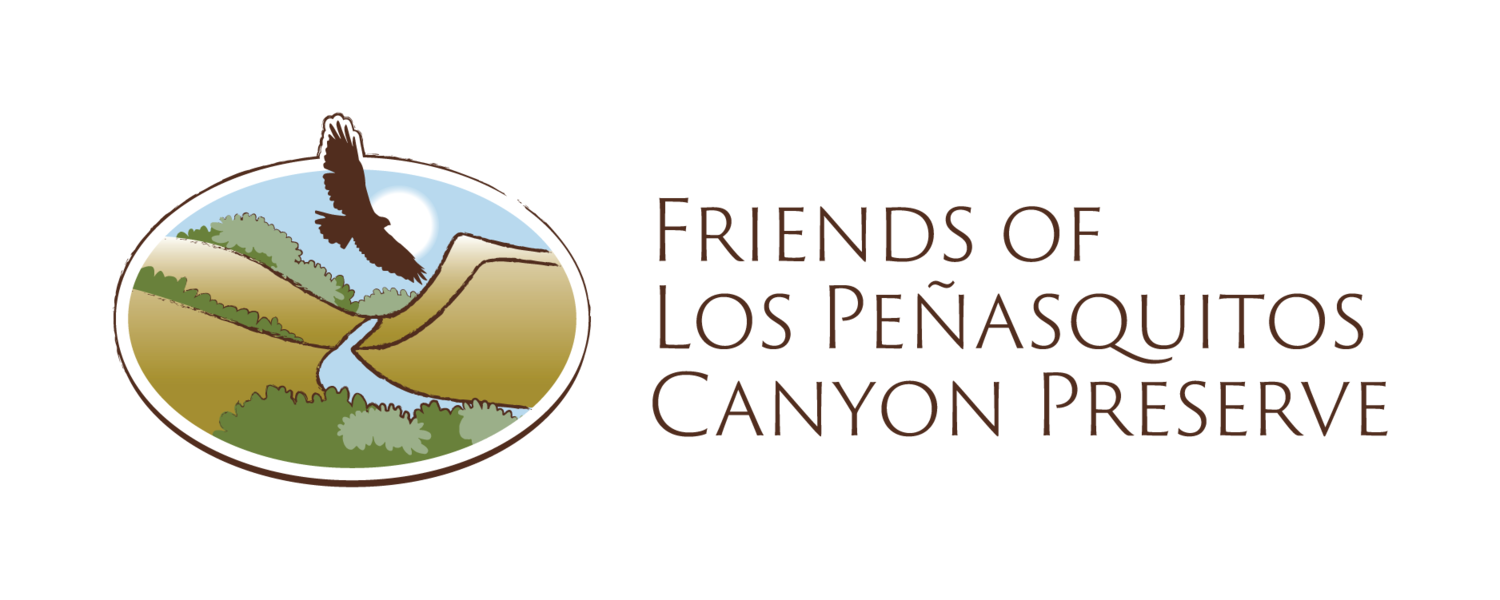Wonderful Willowy Monardella
Mike Kelly, conservation chair and secretary
I walk through the brush in López Canyon in Peñasquitos Canyon Preserve and suddenly a familiar, wonderful smell rises to my nose. I identify it as a spearmint odor, wonderfully sweet. I simply love this plant. I first met it about 30 years ago, perhaps sooner, when California Native Plant Society and Friends’ member Cindy Burrascano and I, and sometimes others, were ground truthing Biologist Maggie Loys’ early map of rare and endangered plant species in our Preserve. This began a 30 year journey of working to save this Federally and State listed endangered plant here and in other sites in the County. Today I’m with others doing our annual survey of this plant, counting how many remain and if there are any new seedlings.
Where else does this plant exist? Lopez Canyon probably represents the northernmost limit of this plant. State Route 52 is almost the southern boundary. As a contractor on the Marine Corps Miramar base I surveyed and worked with this species on a Marine-owned finger canyon just south of SR52 and just west of Santo Road. The few plants there are probably the southernmost population of the plant, or close to it. There used to be a few plants south of what is now SR52 in Marian Bear Canyon. They’re long gone and transplantation efforts by Caltrans in the same location failed. I-805 seems to be the boundary on the west. The plant is well established in Sycamore Canyon and Clark Canyon to the east of the base and they probably represent the easternmost boundary of the plant. In other words, this plant is highly restricted geographically. This makes it an ultra endemic plant, one found just in our county and then just in a small part of it.
How many plants are left? I’ve surveyed most of the Monardella viminea populations including the biggest, which are on Marine Corps Air Station Miramar. I estimate there are fewer than 4,000 plants left in the wild. Threats to this plant include development, erosion, invasive plants, and illegal trails. Being somewhat moisture sensitive, I expect climate change driven drier and hotter conditions will negatively impact the species as well.
What can volunteers do? We can continue our surveys, often in conjunction with City staff. We can do weeding as several of us do each year in López Canyon. We can collect ripe seed, under permit, and grow up plants, then transplant them into López Canyon as the Friends did in 2010 with an MSCP grant. Currently, Native Plant Society’s Lee Gordon and other volunteers such as our Beth Mather, are surveying more newly found populations of this species, collecting seed, and transplanting the new plants out, then monitoring. Lee is documenting at what temperatures the seed best germinates, and how to grow healthy seedlings for transplanting. The Marine Corps even allowed Lee and his volunteers access to the base to access several canyons on their periphery.
The Friends will be collecting seeds again and growing up plants for new plantings, as well as testing and using older seeds we collected.
Monardella bush on the edge of a terrace in López Canyon being eroded away. This plant was gone when visited the next year. Photo by Margaret Filius, June 2012.
Closeup of Monardella flower in López Canyon. Photo by Margaret Filius, June 2012.
Friends’ president Les Braund and Native Plant Society’s Cindy Burrascano examine a blooming Willowy monardella (Monardella viminea) in López Canyon. Photo by Mike Kelly, June 2021



